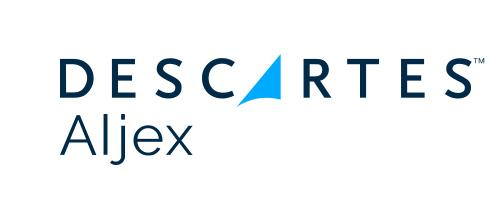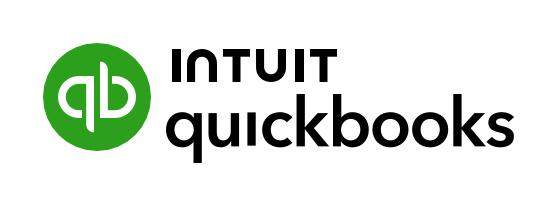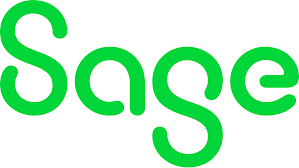For SaaS companies, invoicing is one of the most important (and most complex) recurring processes. Every month (or year, depending on your model), you need to generate accurate invoices for customers across multiple plans, tiers, currencies, and billing cycles.
Doing this manually not only slows down your finance team, as it creates errors, revenue leakage, and frustrated customers. That’s why more and more SaaS businesses are turning to SaaS invoicing automation: intelligent automation that creates, validates, and sends invoices automatically inside your existing systems.
SaaS invoicing is the process of creating, sending, and managing invoices for software-as-a-service (SaaS) products such as Asana, Trello, HubSpot, and many others. Since SaaS businesses typically charge customers on a recurring basis (monthly, quarterly, or annually), invoicing must handle subscriptions, upgrades, downgrades, discounts, and renewals automatically.
Instead of preparing invoices manually, SaaS invoicing systems generate them based on customer usage or subscription plans, send them on schedule, and keep payment records accurate. This helps SaaS companies save time, reduce errors, and ensure customers are billed correctly every cycle.
At VirtuDesk, our approach is simple: no new software, no retraining, no disruption. AI and Robots handle the billing tasks in the background, so your finance team can focus on growth instead of spreadsheets.
Why SaaS Companies Are Dropping Manual Invoicing and Starting to Automate
It’s not only SaaS companies that turn to invoicing automation – every business, once it starts to grow, eventually needs help handling invoicing. At some point, doing it all manually just takes too much time and leads to too many mistakes.
For SaaS businesses, this step comes even sooner. Very often with subscription-based models and thousands of invoices going out each month, automation becomes a must-have rather than a nice-to-have. Here are the main reasons why SaaS companies decide to automate their invoicing:
1) Invoice scalability: As the number of invoices grows (especially within subscription-based services) the workload for one person can quickly multiply. With automation, the number of invoices doesn’t matter anymore.
2) Billing errors: Typos, plan mistakes, missed renewals, or wrong discounts happen all the time – leading to (sometimes costly) corrections and delays.
3) Revenue leakage: Late or incomplete invoices directly affect cash flow and revenue recognition. Automation ensures invoices go out on time and nothing slips through the cracks.
4) Slow billing cycles: Preparing, validating, and sending invoices manually always takes longer. Automation speeds it up and helps you collect payments faster.
5) Poor customer experience: Delayed or confusing invoices cause frustration, extra support tickets, and even churn. Clean, automated invoicing improves trust and satisfaction.
Real Example of a SaaS Provider Automating Invoicing
Automation of billing and payment reminders in SaaS has been shown to reduce payment defaults and improve revenue optimization. According to Asmiq, one Swiss SaaS provider reportedly reduced churn by 30% and increased revenue by 20% within 12 months after implementing automated billing.
Two Ways to Implement Invoice Automation in Your SaaS Business
When a SaaS company decides to automate invoicing, the process depends on the chosen approach. In most cases, there are two main paths:
1. Moving to a new billing platform
This option means migrating all your invoicing and subscription data into a dedicated billing system like Chargebee, Recurly, or Stripe Billing. It’s a good choice for companies starting fresh or ready to fully replace their current process.
- Implementation time: usually 2–6 months depending on data complexity and integrations.
- Cost: higher upfront, often starting at $1,000 – $5,000 per month in platform fees plus migration costs.
- Pros: all-in-one solution, clean setup, and less dependency on legacy systems.
- Cons: long setup time, staff training needed, and less flexibility to customize workflows.
2. Automating your current tools
Instead of replacing your systems, automation can run directly within your existing tools (CRM, ERP, Excel, or accounting software). Software robots and AI connect the dots between them — no migration needed.
- Implementation time: 2–8 weeks depending on process complexity.
- Cost: lower setup cost, flexible pricing based on processes automated.
- Pros: no system change, minimal disruption, and full flexibility.
- Cons: dependent on the quality and structure of your existing data.
At VirtuDesk, we focus on intelligent automation using AI and robots that read, validate, and fill in missing information to create accurate invoices automatically.
As an example, our robots log into your systems, read billing data, and prepare invoices without human input.
What Exactly Does Invoicing Automation Automate for SaaS Providers?
Invoicing automating can sound simple – but in SaaS, invoicing isn’t just sending a document with an amount on it. It’s a complex, multi-step process that touches almost every system: from product usage and subscription management to accounting, taxes, and reporting. In short, invoicing automation connects every part of your financial process.
For SaaS providers, it removes the need for manual checks, endless spreadsheets, and hours of repetitive work each month.
Here’s what invoicing automation actually takes care of for SaaS companies:
1. Subscription and Usage Data Collection
Automation starts by gathering all the information needed to generate an invoice – subscription plans, usage data, renewals, upgrades, downgrades, discounts, and even trial conversions.
Robots connect to your CRM, ERP, or billing database, read the data in real time, and make sure it’s consistent. No more exporting CSVs or copy-pasting numbers.
2. Price, Plan, and Discount Validation
In SaaS, customers are often on different tiers, pricing models, or have custom deals. Manually checking each invoice against plan details is time-consuming and error-prone.
Automation validates all the elements – plan type, usage limits, discounts, and taxes – based on your business rules. If something doesn’t match, it flags the entry for review instead of sending a wrong invoice.
3. Invoice Generation and Formatting
Once everything is validated, automation tools or bots generate invoices automatically – complete with all necessary customer details, tax rates, and legal identifiers.
Invoices are formatted according to your templates and can even adapt to different regions or currencies. For global SaaS providers, that’s crucial.
4. Approval Workflows
For invoices that require manual review (e.g., enterprise clients, high-value deals, or exceptions), automation routes them to the right person for approval.
You set the rules (by amount, by client type, or by department) and the system ensures every invoice is reviewed before it’s sent.
5. Posting and Delivery
After approval, automation handles posting invoices directly into your accounting or ERP system and sends them to customers automatically – via email, API, or integrated client portals.
It ensures that every invoice goes out on time, with the right attachments, without anyone having to press “send.”
6. Tax and Compliance Management
For SaaS companies operating across regions, sales tax and VAT rules can be a nightmare. Automation ensures accurate tax calculation, posting, and reporting based on where your customers are located.
It also keeps your invoicing compliant with local standards (for example, e-invoicing requirements in Europe).
7. Payment Matching and Reconciliation
Once payments start coming in, automation doesn’t stop. It matches payments with the right invoices automatically, marks them as paid, and updates your system.
It also spots underpayments, duplicates, or missing payments – so your finance team doesn’t spend hours digging through transaction lists.
8. Reporting and Forecasting
Automation tools consolidate all invoicing and payment data to show real-time insights – monthly recurring revenue (MRR), churn, collection times, and revenue forecasts.
Dashboards can highlight trends, payment delays, or upcoming renewals so that management always has a clear financial picture.
9. Customer Notifications and Follow-Ups
From sending new invoices to reminders for overdue payments, automation manages communication too.
Follow-ups go out automatically and are always consistent – polite, professional, and on time. This alone can reduce late payments by up to 30–40%.
Example of Automating SaaS Invoicing Step by Step
- Customer subscribes to a new plan → Data flows from CRM.
- Robot reads the subscription details (plan, price, discount, billing cycle).
- Invoice is created automatically in your accounting system.
- Tax rates and compliance rules are applied in real time.
- Invoice is validated and approved (if needed).
- Invoice is sent to the customer on time, every time.
- Dashboards show invoice status and revenue recognized.
Not only SaaS Companies Benefit from Invoicing Automation
While automation is essential for SaaS businesses, it’s just as valuable for any company that deals with recurring or high-volume billing. Professional services, marketplaces, agencies, or even manufacturing companies all save time and avoid costly errors by automating their invoicing workflows. The benefits are universal – faster billing, fewer mistakes, and smoother cash flow, no matter the industry.
Get Started with SaaS Invoicing Automation
If you’d like a free opinion and audit of your current invoicing process – and to see what can be automated to save time and reduce costs – get in touch with us. Our team will review your workflow and show you where automation can make the biggest impact.
Final Thoughts
For SaaS companies, billing speed and accuracy are critical. Manual invoicing slows you down, frustrates customers, and creates real financial risk. With VirtuDesk’s automated billing system for SaaS, you get:
- 100% accurate invoices
- Shorter billing cycles
- Fewer customer complaints
- Stronger cash flow
Ready to automate your SaaS invoicing? Book a free audit of your billing process today.
FAQ About SaaS Invoicing Automation
1. What is SaaS invoicing automation?
SaaS invoicing automation uses intelligent software to generate, validate, and send invoices automatically. Instead of manual data entry and billing, robots handle the process in the background – ensuring accuracy, faster billing cycles, and audit-ready compliance.
2. How does SaaS invoicing automation reduce errors?
By applying consistent business rules. Robots validate subscription data, prices, taxes, and discounts before creating an invoice – ensuring customers are billed correctly every time.
3. How does this improve cash flow?
Invoices are sent faster and more accurately, reducing delays in payment. No missed renewals or late invoices = smoother, more predictable revenue.
4. Do I need to install new software?
No. VirtuDesk works inside the systems you already use. Your team doesn’t need retraining — automation runs in the background.
5. Who benefits most from SaaS invoicing automation?
- Growing SaaS companies scaling beyond manual invoicing.
- Subscription businesses with complex plans, usage-based billing, or multiple currencies.
- Teams struggling with late invoices, revenue leakage, or customer complaints.
6. Does it support compliance and audits?
Yes. Every invoice action is logged, showing who approved it, when it was sent, and under what rules. This creates a transparent, audit-ready billing trail.






